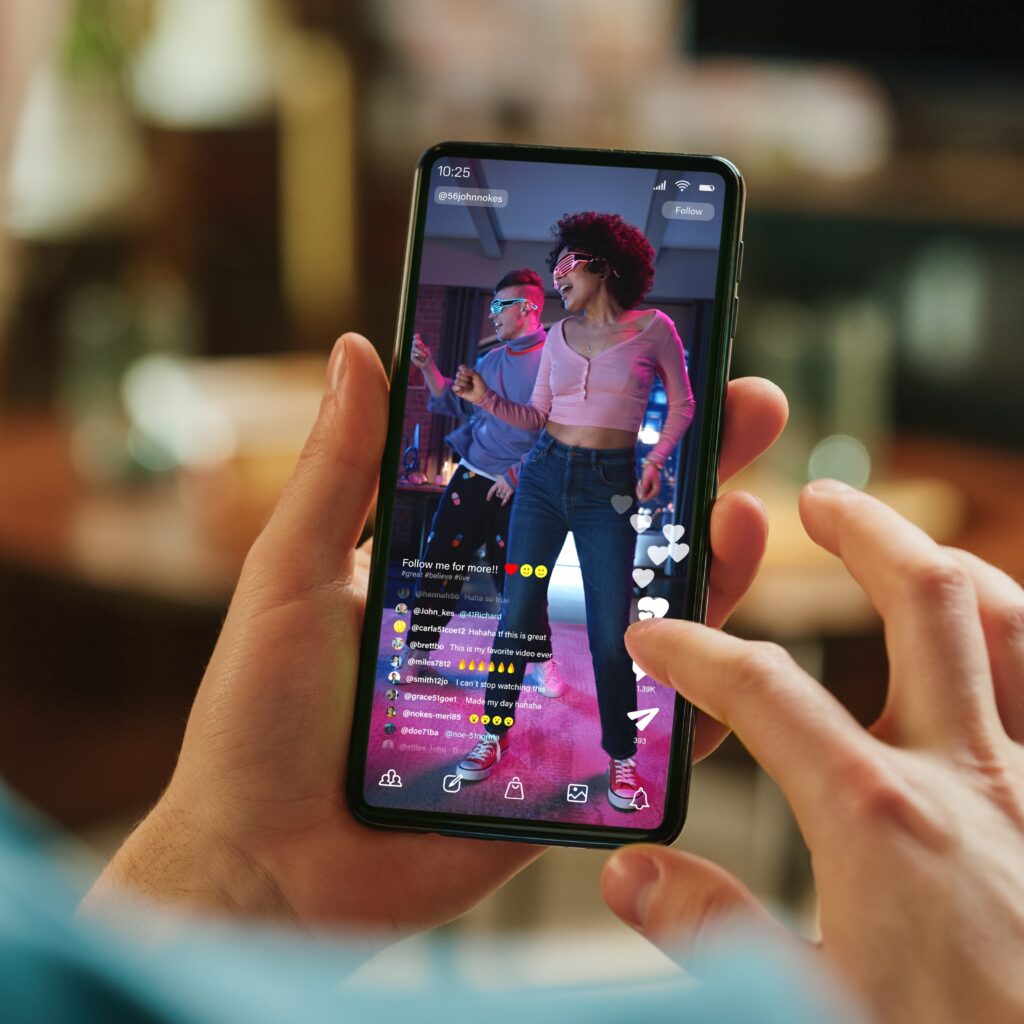Every brand has something to say online. But far fewer say it in a way that gets remembered. That’s the difference between simply posting and having a social media content strategy that supports your business goals and builds meaningful engagement.
At Vertigo, we believe in strategies that drive results—ones grounded in purpose and built for evolving audiences. Today’s users are selective and discerning. If your content doesn’t connect, you’re not just being ignored—you’re losing momentum.
Here’s how to build a social media content strategy that delivers measurable impact.
1. Start With Purpose Before Picking Platforms
Your brand doesn’t need to be on every platform. It needs to be on the right ones.
Begin by clarifying:
- What outcomes are you aiming for? (Awareness, leads, engagement, education?)
- Who is your audience, and where do they spend time online?
- What action do you want from them?
Chasing every channel without alignment leads to scattered results. Instead, let your business priorities shape your platform focus.
A B2B company might gain more traction with LinkedIn, while a design-driven lifestyle brand may find better reach through Instagram or YouTube. Purpose drives platform—not the other way around.
2. Know Your Audience Beyond the Basics
Strong strategies are built on clear audience understanding. Go beyond broad demographics and dive into behaviors, values, and pain points.
Use platform insights and tools like Google Analytics or audience segmentation to discover:
- What formats your audience interacts with most
- When they’re most likely to engage
- Which content types lead to clicks, saves, or shares
Monitor comment sections, look for recurring questions, and identify content patterns that trigger interaction. These cues help you create material that isn’t just seen—but remembered and acted upon.
3. Balance Organic and Paid Social
Organic content builds relationships. Paid content amplifies them.
Organic posts let your brand show up consistently. It’s where you offer value, develop trust, and build brand identity. Think thought pieces, behind-the-scenes glimpses, and community features.
Paid campaigns help extend your reach, test messaging, and target specific audience segments. Use data from your organic efforts to inform what’s worth promoting and what should be optimized.
Working both together strengthens your message across the board.
4. Create Content With Intention
Audiences aren’t aimlessly scrolling—they’re looking for something that connects. Your job is to deliver value in the form of education, entertainment, insight, or relevance.
Consider these core tactics:
- Short-form video: Reels, Shorts, and TikToks are top-performing formats. Use strong hooks in the first few seconds, focus on clarity, and keep it visually compelling.
- Influencer partnerships: Collaborate with creators who align with your mission and tone. Their voice can introduce your brand to new audiences with credibility.
- Platform-specific adaptation: What works on LinkedIn won’t work on Instagram without tweaking tone and visuals. Customize for each channel’s unique audience behavior.
Always ask: What will the audience take away from this post? If there’s no takeaway, rethink the execution.
5. Build a Content Calendar That Supports Flexibility
Structure provides consistency. Flexibility keeps it relevant.
Start with:
- Content themes (or pillars): These anchor your messaging around key areas like customer education, company updates, or cultural commentary.
- Formats and mediums: Rotate between images, carousels, stories, and interactive tools like polls or Q&As.
- Publishing rhythm: Regularity beats frequency. It’s more important to post consistently than to post constantly.
Leave space for quick-turn content that reacts to timely news or industry shifts. A nimble strategy outperforms a rigid one every time.
6. Focus on Community, Not Just Numbers
Follower counts don’t build loyalty—engagement does.
Brands that stand out are the ones that invest in genuine dialogue. This means:
- Replying to comments thoughtfully
- Sharing user-generated content to spotlight supporters
- Hosting live sessions or Q&As that invite participation
- Being present, not just promotional
This level of interaction shifts your social presence from content delivery to relationship development.
Social Media Strategy is a Business Strategy
Social media isn’t just a place to post—it’s a channel that can influence everything from brand equity to conversion rates. A good strategy reflects your core business goals, speaks with a clear voice, and delivers consistent value across platforms.
Done well, your content becomes more than a marketing tool—it becomes a brand asset.
At Vertigo, we help brands design and implement strategies that are clear, focused, and responsive. Whether you’re expanding reach, rethinking brand tone, or launching a new offer, we help you create content with purpose and impact.
Turn Your Content Into a Competitive Advantage
If you’re ready to move beyond guesswork and build a performance-driven social media plan, we’re ready to collaborate. From audits to campaign frameworks and full-funnel content ecosystems, we’ll meet you where you are and help take your content further.
Every brand has something to say online. But far fewer say it in a way that gets remembered.
That’s the difference between simply posting and having a social media content strategy that supports your business goals, resonates with real people, and sparks meaningful engagement. Without a clear strategy, even the most beautiful content can vanish into the scroll. But with intention, insight, and agility, your social presence becomes a growth engine—not a guessing game.
At Vertigo, we believe in strategies that drive results—grounded in purpose, built for evolving audiences, and agile enough to adapt in real time. Today’s users are selective, savvy, and more connected than ever. If your content doesn’t connect, you’re not just being ignored—you’re losing relevance, reach, and revenue.
Social strategy isn’t a nice-to-have. It’s business-critical. It’s how modern brands build awareness, convert audiences, and foster loyalty at scale. And most importantly, it’s how you stay memorable in a crowded feed.
So, what’s next?
It’s time to move beyond random posts and reactive tactics. You need a roadmap built on data, creativity, and purpose—one that scales with your goals and evolves with your audience.
Need a Custom Roadmap?
If you’re ready to move beyond guesswork and build a performance-driven social media plan, we’re ready to collaborate. From audits to campaign frameworks and full-funnel content ecosystems, we’ll meet you where you are and help take your content further.
FAQ
What’s the first step in creating a social media content strategy?
Begin by clarifying your business objectives, ideal audience, and desired outcomes. Let purpose—not popularity—guide your platform choices.
Should I be on every social media platform?
No. Focus on the platforms where your audience is most active and that align with your brand’s content style and goals.
What’s the difference between organic and paid content?
Organic content builds trust and consistency, while paid content boosts visibility and targets specific audiences. Both are essential to a balanced strategy.
How often should I post on social media?
Consistency is more important than frequency. Set a realistic schedule and stick to it while leaving room for timely or reactive content.
How do I measure success on social media?
Track engagement rates, conversions, audience growth, and how well your content aligns with business goals—not just likes or followers.













